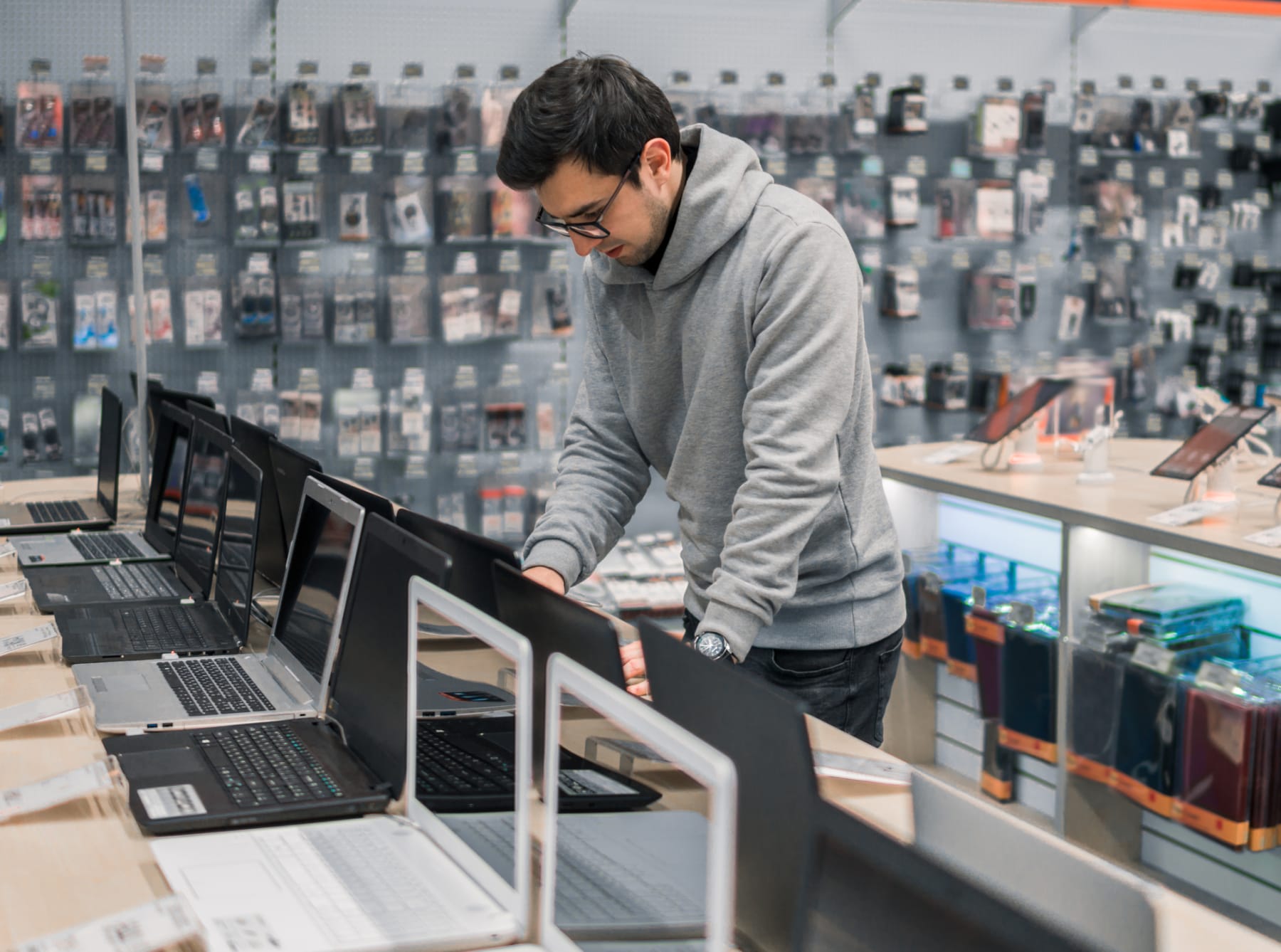What Is 'Open-Box' and Should You Buy It?

Refurbished goods tend to get a bad rap, but these items can actually save you a bundle if they're truly in like-new condition. Open-box products have a similarly bad reputation because the term suggests they're used. However, they may actually be brand-new items — just with a nice discount because the box happens to be open.
Open-box products are available at many retailers, including Best Buy, eBay, and Wayfair. And while they can be a good deal, that doesn't mean they always are. If you're considering buying open-box, here are a few things you need to know first.
What Does 'Open-Box' Mean?
When you see an item marked as "open-box," it means just that: the packaging has been opened. The product has likely been returned for some reason, but not necessarily because it's damaged. An open-box product could be something a shopper changed their mind about. The buyer may have returned it because they decided they didn't like the color, or for an equally trivial reason. So you could be picking up a completely new, unused item for a nice discount.
However, that may not always be the case. Most stores allow you to return products for at least a couple of weeks, and as a result, open-box items could have seen some use. They could show a little wear or cosmetic damage from their brief time in the original buyer's hands. This usually isn't a problem, but you should be aware that buying open-box means some items will be used, if only lightly.
Open-box products can also be floor models that the store has used to show the item off to customers. These can be a risky buy, as they've probably seen a lot of use. They may have never left the store, but all-day demoing from random customers adds up, and can make the items more prone to failure. If the open-box item you're looking at is a floor model, you may want to reconsider.
Whatever the reason items have received the "open-box" label, these products usually get an inspection to make sure they're working before they're resold. This could be a thorough check of each product's functionality, or the inspection could be as basic as plugging the item in to make sure it powers on. Either way, open-box products should (usually) work, though it's worth finding out how the retailer has tested them. More testing can help ensure a more reliable product.
SEE ALSO: What Is eBay Certified Refurbished All About?
One other thing to be aware of is the fact that open-box products may be sold "as is," meaning you can't return or exchange them. The manufacturer's warranty may or may not apply, too. So if you buy an open-box product that turns out to be damaged or defective, you have no recourse. Not all retailers do this, but you'll want to find out before you buy.
Even with these caveats, open-box items can still be a bargain for careful shoppers.

Open-Box vs. Refurbished
Refurbished items tend to be damaged goods that have been repaired to return them to like-new condition, while open-box items have simply been returned to the store for some reason, then put back on store shelves with an open-box label. So while retailers may sell refurbished and open-box items in the same section of their store or website, and even use the terms like they're interchangeable, there's a difference between refurbished and open-box products.
Either type of product can give you a great deal, but be sure you know which one you're buying — and what to look for — before you take it home.
The Whats, Whys, and Wheres of Buying Open-Box
What to Consider Before Buying Open-Box
Before you buy, be sure to find out the following:
- What the return policy is. While most open-box products work fine, some may not. A return policy protects you in case you wind up with a lemon.
- Whether it'll cost anything to return. If the store has a return policy, you'll also want to find out whether there's a restocking fee, or if you have to pay postage to return a purchase you've made online.
- Whether there's a warranty. Sometimes the manufacturer's warranty still applies to an open-box item, but sometimes it doesn't.
- Where it came from. If you can, find out if the product was a return (and what it was returned for), a floor model, or something else. Knowing where it came from can tell you a lot about the item's condition. In-store, this may be explained on a sticker on the product box.
- How much wear and tear it has. If you're in a store, ask if you can look at the item before you buy. When online, look for sites with plenty of photos, so you can tell if a product has any obvious physical damage.
- Whether it includes accessories. Sometimes open-box items may be missing manuals, cables, or other accessories. A manual is easy to replace with a digital copy, but cables will just add something else to your shopping list while eating into your savings.
- How big of a bargain it is. You may think all open-box products are great deals, but this isn't always the case. Unless you're getting a good discount, open-box may not be worth the risk.
What to Buy Open-Box
Your biggest opportunities are with pricey electronics, where even a few percentage points could mean serious savings. While not every deal is a good one, shopping open-box can save you in the 20% range — and sometimes more.
Why to Buy Open-Box
The biggest reason to consider an open-box item is cost. Still, be sure to check that discount before you buy. There's always some risk of getting a damaged good, so if the discount isn't great (or there isn't a return policy), you may want to reconsider. Because the products can be brand-new, they can make for a fantastic buy — and as long as there's a return policy, there isn't much risk to buying open-box.
Why NOT to Buy Open-Box
Even with a particularly low price, there are reasons to avoid buying open-box. A lack of return policy can be a big warning sign, with the best prices only offered on products the retailer won't stand behind. Because open-box items may not have a manufacturer's warranty either, there may not be anything you can do if the product is defective.
SEE ALSO: Everything You Need to Know to Buy Refurbished Electronics
It can also be hard to tell how much wear these items have. You may not know why they were returned or whether they were floor models. And if you aren't careful, you could wind up with an item that's simply used, and barely priced any better than a brand-new model.
Where to Buy Open-Box
The best place to buy open-box products is at a retailer you trust. Amazon Warehouse, Newegg, and Best Buy Outlet all sell open-box items, and products often fall under their standard return policies (though you'll want to double-check before making a purchase).
eBay is another place to look for open-box items, but you'll want to shop with care. When buying from a small seller on eBay (or anywhere else), you should look for good feedback, so you can be sure you aren't throwing your money at products that don't work.
Ready to start shopping? Check out the best open-box deals right now, and follow us on Facebook to get more helpful buying advice.
- Refurbished deals can look like they're too good to be true, but that's not always the case. Our refurbished definition can help yopu
- Learn what discounts are available for seniors with our 2025 guide.
- Restaurants and other businesses want to thank you and your family for your service. Read on to discover the most popular 2025 military discounts we could find!
- Explore the best Gift Card discounts of 2025 for your next gift.


Sign In or Register